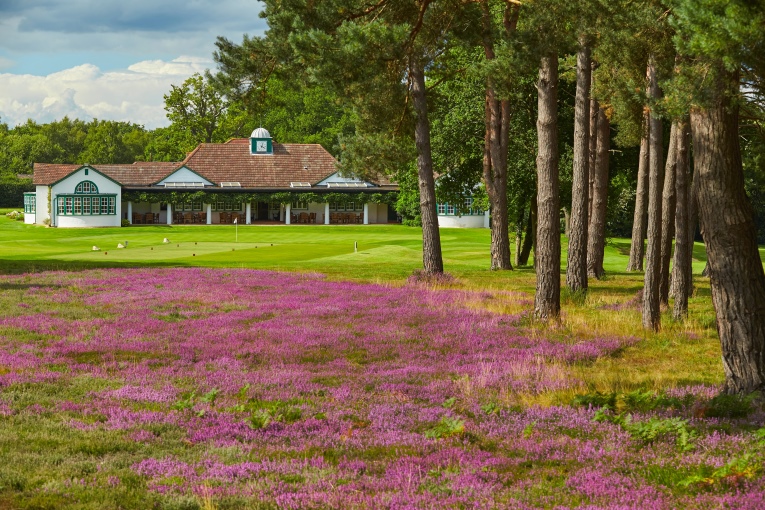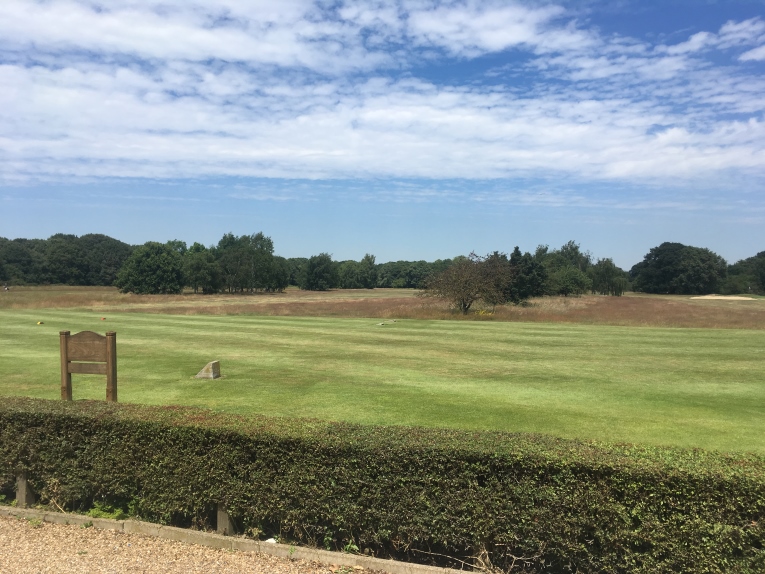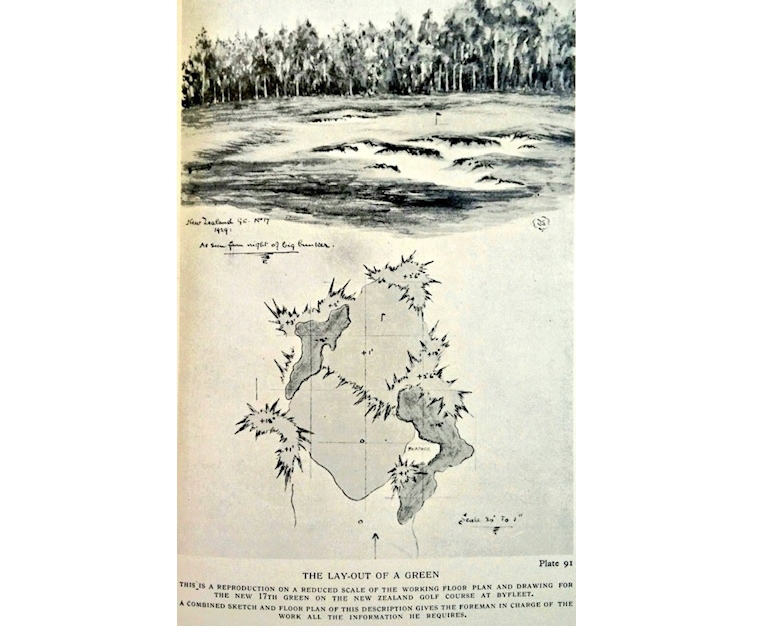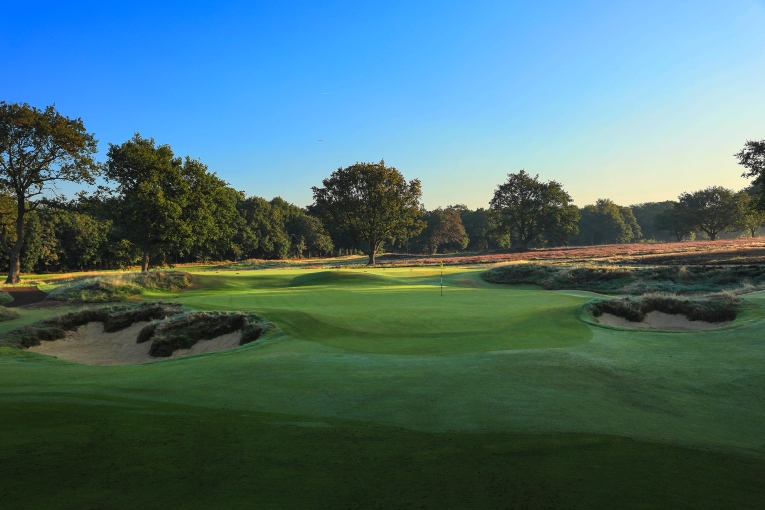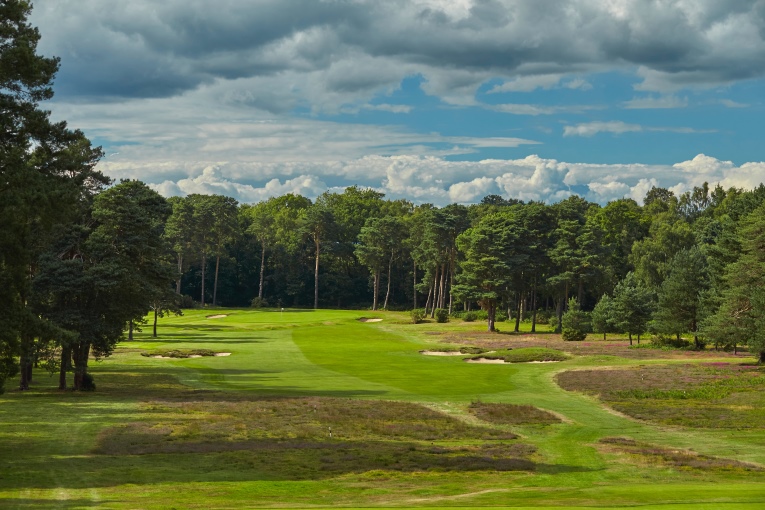Feature Interview with Richard Pennell
July, 2019
1. You love books and worked in Central London selling books from 1997 to 2002. Is the book business as dire as people say? Is Amazon the culprit?
Book-selling was starting to get tricky at that stage as the online options gathered momentum. Central London rents were so tricky, and the price of mainstream books has hardly changed in years, so the margins are very tight. Since I left that industry I think Kindle and online portals have made it even tougher. I love the feel and experience of a good, old-fashioned book (and bookstore) but it is so easy these days to find more convenient alternatives, and I increasingly use these options myself. I do have a few very well-used golf architecture books, though, and those I wouldn’t dream of ditching for electronic versions – they describe works of art, so it feels right to revere the printed word in those cases.
2. Tell us about your time at Mitcham Golf Club as Green Keeper. What sort of soil does it enjoy? What projects did you work on?
Wow, what a great place to learn the fundamentals. A really good Head Greenkeeper to work for, who managed a tiny budget and yet consistently provided greens that rivalled clubs with 10x his budget. All done with one eye on sustainability and a desire to keep nutrition and fungicide use to a minimum. Mitcham Common is a wonderful environment to work on – sandy soil, lots of wildlife, plenty of less manicured areas. The projects were all in-house, rebuilding tees, draining greens, re-building bunkers, etc. I spent five very happy years there, and in hindsight the experience has come in so useful in subsequent roles.
3. How true is today’s design to what Old Tom Morris fashioned in 1891?
Very little remains of what was then the original Prince’s Golf Club. A parcel of land across one of the roads was restored to simply common land many moons ago, and when Prince’s effectively re-located to Kent, Mitcham GC was created. Architecturally, the “new” course is a little quirky in places but there are many good holes and it was always fun to play there. It is great to see good value golf so close to London.
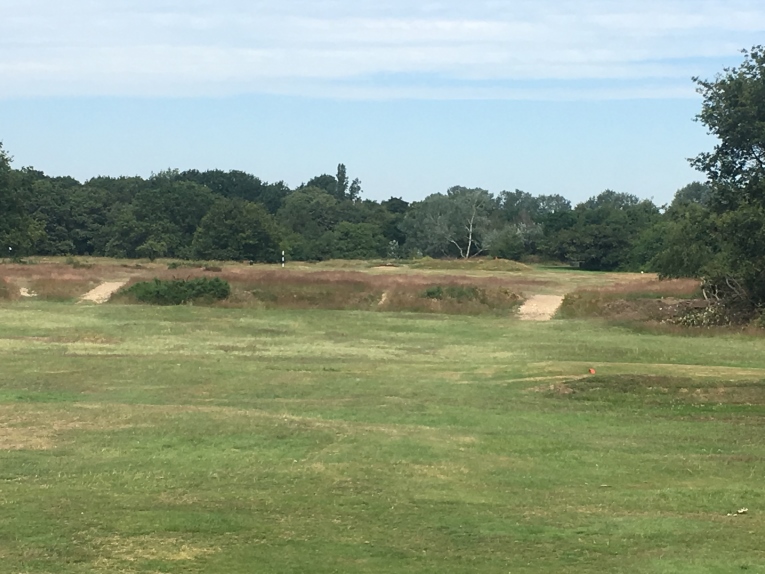
Mitcham Golf Club is a reminder that just a few feet in elevation change intelligently incorporated into a design can make a hole like the 13th spring to life!
4. Their greens are famous in Surrey and have never been laid to USGA specifications. What is the secret behind their long-standing success?
The soil is a huge element, plus the expertise of the aforementioned Head Greenkeeper. Each green has to be treated individually, as they are varied in the subsoil, drainage, aspect, etc., but with careful skillful management it just shows you can provide superb turf on a very tight budget.
5. Mitcham is a dozen miles of London center, yet it offers golf at affordable rates. How does it pull off that trick?
The cost base of the Club is pretty low, and it is reliant on green fee income to some degree, but golfers seem happy to play there, as it does represent great value for money when many nearby clubs charge a fortune (by UK standards, of course!) for member and visitor access.
6. You left Mitcham for New Zealand Golf Club in 2007. First, what can you tell us about Samuel Mure Fergusson? He seems to be a largely underappreciated figure in heathland golf.
Fergusson is something of a legend. He was an exceptional amateur golfer, and ruled NZ with a rod of iron in the early days (before it became a Members’ Club, it was privately owned by Hugh Fortescue Locke-King, who later created Brooklands race track). The Club was a bolt-hole for the London elite, many of whom would travel down from White’s or the other dining clubs in St James. It must have been like an episode of Jeeves and Wooster in the early 1900’s! Fergusson’s original layout included many cross bunkers, and while the amendments to the routing after he passed away were not that major, the tweaks that were made and the bunker re-positioning were the work of genius. Woking member Tom Simpson (please see his drawing below from The Architectural Side of Golf) was brought in very swiftly after Fergusson died, and not a great deal has changed since he finished his work in the late 20’s/early 30’s. One nice story about “Mure” – the Club’s minutes recorded that they discovered a significant amount of port had been ordered shortly before his demise, which was swiftly returned to the vintner, no longer required!
7. What are the design strengths and weaknesses of New Zealand?
Lovely, flowing routing, easy walking between greens and tees (and in general, as the property is very flat), superb and fairly minimal bunkering, lots of interesting hollows, some excellent simple devices like the green sloping away from play on several holes, and the contours foreshortening the visuals on e.g. the 4th hole. Such a simple golf course, but so rewarding to play again and again. The 17th green complex is one of the most beautiful, challenging areas on a golf course I’ve ever seen – there is a lifetime of learning to be had on and around it. Simpson at his bold best! The heather grows so well at NZ, and is the primary hazard. In terms of weaknesses, the fact that the land is flatter than, for example, Swinley Forest detracts a little bit. The constant spread of the rhododendrons creates glorious colour and charm at certain times, but they really do spread. Last time I was there, the team had stripped some significant areas of rhododendron ingress, and while it looks rough at first, those lovely playing corridors were getting very tight in places. It is good to see this happen, as it does affect how the design plays out.
8. How does a course that measures 6,100 yards still enjoy to this day the reputation for challenging the strong club golfer?
It is par 68, so you end up hitting a lot of long irons! The heather is brutal, and the fairways are pretty tight, so no one ever rips it up round there!
9. What is required to play New Zealand well?
Just straight hitting from the tee, and a willingness to “take your medicine” when you do find troublesome heather…because you will!
10. The opportunity presented itself to go work at Royal Wimbledon. A lot of people don’t realize that it is the third oldest golf club in England. Is today’s 6,300 yard course a relatively untouched Colt design?
The course is being restored in several places to what Colt left behind, using some old aerial photographs as a guide. Mackenzie & Ebert have been involved for several years now, and the course is improving steadily all the time. The club is ambitious for the course, and fund some pretty meaningful expenditure on it, all of which will pay dividends for the golfers for many years to come. I think it is fair to say not that much has changed, but Colt was not the first to work on RWGC, as the Club’s history and Tom Mackenzie’s painstaking research showed.

The 1st at Royal Wimbledon is a stern opener, calling for a well judged approach to an elevated green.
11. That being the case, do you feel like the course garners its fair share of attention? I don’t hear it discussed in the same lofty tones as the famed Surrey courses.
No. I have always loved playing at Royal Wimbledon, and I think it does pass under the radar of most. Part of that is that the Club don’t seek publicity – it is a proper, private Members’ Club, who don’t need or want further exposure, and so e.g. raters don’t tend to go there. I hope it will get a bit more praise when all the renovations are complete, as it is a really nice course to play, but perhaps most of the members there couldn’t care less about what the outsiders think. They know that the club itself, and the history, are wonderful, and they’re happy to keep it for themselves, which I completely understand. I love it!

Classic ground game options exist at Royal Wimbledon’s 7th – perhaps one can chase his second shot onto the putting green on this par 5?
12. Based on the photographs above, I see why! Let’s shift focus to your current position – Secretary of Woking Golf Club. In terms of architecture, please explain why Woking enjoys a preeminent position in inland golf.
Woking was the first of the Surrey & Berkshire heathlands, and paved the way for the likes of New Zealand, Sunningdale, Walton Heath, etc. For its time, the green complexes were unusually large and unusually contoured, and they still stand out to this day. Then you add in some great bunkering, including the ones on the 4th based on the “Principal’s Nose” bunkers at TOC, and you have a course that will provide such variety and strategic challenge every time you play it for decades, twinned with the charm of an understated yet comfortable club. Woking is purely about golf, no snooker, no TV – our members and guests come here because they love playing the golf course, and it such a pleasure and a privilege to play a part in maintaining and enhancing that for all.
Some courses grow on you over time, and some grab you from day one, and when I first played here in c.2005 (with Tony Muldoon of GCA, who I had never met except for “on the internet”), I fell for the golf course and the club in a way that of all the places I’ve ever golfed, only Cypress Point, Sand Hills, and Royal Cinque Ports compared for first and lasting impressions. We have so many architects and golf-nuts come through Woking – I’ve yet to see one disappointed with what they found!
13. Tick through a few of its members and their place in golf in the first three decades of the 20th century.
Bernard Darwin – great amateur, golf writer for the Times, well-travelled and influential figure
Stuart Paton – “The Mussolini of Woking”, responsible with Low (below) for the bunkers on the 4th hole
John Low – great amateur golfer, architect, R&A Rules Committee man, author, etc.
Tom Simpson – decided to become an architect after seeing Low & Paton’s work on the 4th hole bunkers, apparently done on a rainy winter’s day!
A J Balfour – Captain of the Club whilst Prime Minister!!!
14. Not every club has Darwin write about it, ‘“The best and pleasantest place to play golf that I have ever known”, so there’s that! Let’s clear up something: The term heathland is misunderstood. Please define it for us.
This land, along with that on which Worplesdon and West Hill (the other two W’s!) sit was designated as part of the Necropolis Company’s Brookland Cemetery, to cope with the influx of bodies from the sprawling metropolis of London. However, once cremation was legalized, the demand for land decreased, and these clubs rented the land for golf. Heathland is in some ways an artificial landscape, as it is really a stage in a life-cycle between a cleared area and woodland. When this course was laid out, the landscape was pretty sparse, as the timber from the trees and to some degree the turf would have been harvested for fuel by the locals.
Like many clubs round here, the original course would have had very few trees if any, but over time it slowly becomes woodland, and so now most heathland golf course are corridors of heathland through woodland. Here going back 40 years, the woodland and scrub was such that you couldn’t actually see one fairway from another in places, but the Club has worked hard to thin out many areas, which has a knock-on benefit for turf.
15. To stimulate the growth and healthy existence of heath, what ingredients are required?
Limited traffic (footfall and machinery), careful management including cutting it regularly to stimulate re-growth, eradication of saplings and grasses within the heather, trying to minimize deciduous leaf litter. Our artisan club work very hard to pull out saplings, and the greens team hand-blow the leaf litter out from the base of the heather. We are also being increasingly proactive with tree removal, although this is sometimes contentious…
16. To that end, Woking undertook at tree removal program over the winter of 2018/9. Tell us about it.
We took out a large area of mature trees and scrub between our 2nd green and 11th tee, and it has transformed the landscape, and in time will transform some difficult areas in terms of turf health. The view from the 11th tee now offers a vista across much of the front 9, and the members love it. Give it a season or two, and the increased air flow and light will result in significant improvements in soil moisture, thatch levels and general grass health on the 2nd and 5th holes in particular. It is also lovely to feel the increased air movement when judging club selection on the first 5 holes as a result of this work. We couldn’t have picked a better spot to showcase what can be done with a little expenditure and a lot of vision, which I am indebted to Andy Ewence, our Course Manager, for.

Heathland courses enjoy a rich texture that other inland courses around the world struggle to achieve.
17. What are the duties of a Secretary at a private golf club in the United Kingdom? Are they much different from a General Manager at a North American club?
The Secretary role is essentially a General Manager but the specifics of the governance at individual clubs dictate the degree to which a Secretary or General Manager has control over the operation. At Woking, we have a traditional Committee structure, whereby volunteers serve on Committee for up to 3 years at a stretch, and while this doesn’t always entail very much continuity, I am very lucky here in that the membership, and therefore my Committee, are delightful, articulate professionals and so it is a pleasure rather than a frustration to get to work with and for them. Having been through the CCM education pathway that most US GM’s have graduated through, I know many other managers are more like a CEO than the old-school Secretary. The role is such fun – a real mix between front line customer service (which I still love from the bookshop days), administration, and staff and resource management. We are looking after people when they are in their leisure time, at a place they love being, so the general vibe around the club is friendly and welcoming, and the view out of my window, of our contoured 18th green, is wonderful! The other thing that is wonderful in the UK is that access is generally a lot easier than at our North American equivalent clubs, so as well as looking after my own delightful membership, I get to play a part in welcoming the likes of the Senior Golfers’ Society (and many other prestigious groups) plus many members from other fine clubs all over the UK and beyond. Golf is a small world, and to be at one of the finest clubs in that network is such a privilege. Hardly seems like work most days…
18. The Wokings, Swinleys, Sunningdales are known world-wide. Tell us about three other gems that perhaps the visitor hasn’t heard of but that any student of architecture should see within ~ ½ hour drive of Woking.
I have always loved playing at Hankley Common, which often goes under the radar of the architecture buffs. It is a wonderful setting with some great holes, and I feel it is often over-looked. Similarly, Liphook has some superb holes and, like Hankley, is often in great condition. The same can also be said of Tandridge, which was a Colt course. Our neighbours at Worplesdon and West Hill are similarly lovely, and the 3 W’s make a superb travel itinerary, as each club has its own feel and charm, with good hotels locally. But I am going to mention one which I haven’t actually played, and I know that sounds perverse, but so many people have said how much fun it is – Reigate Heath. 9 holes which are definitely on my radar for the near future. You asked for three, and that is 6 so far, but if I had to pick any one course besides the three you mention for someone to see great architecture, it would be The Addington. It is an incredible place. I wouldn’t want to play it every day, as I think it would be brutal, but it has some holes that will blow the first time visitor’s mind!
Richard Pennell may be contacted at Richard@wokinggolfclub.co.uk.


